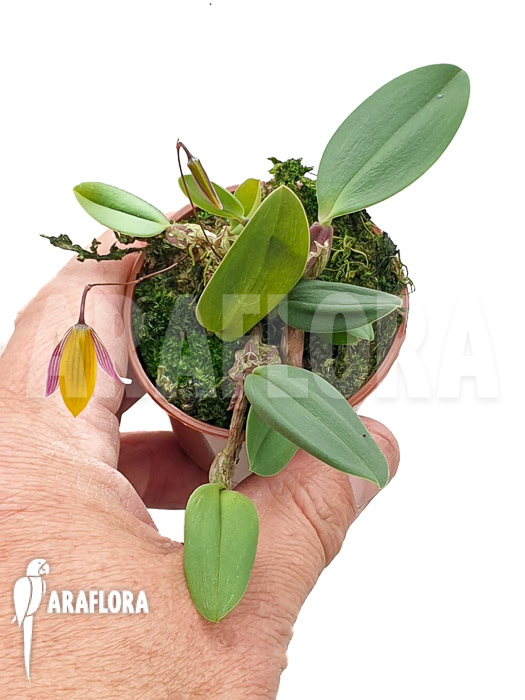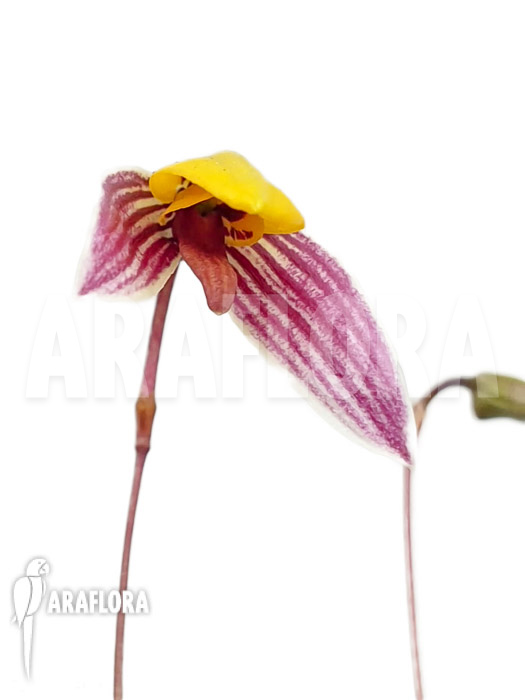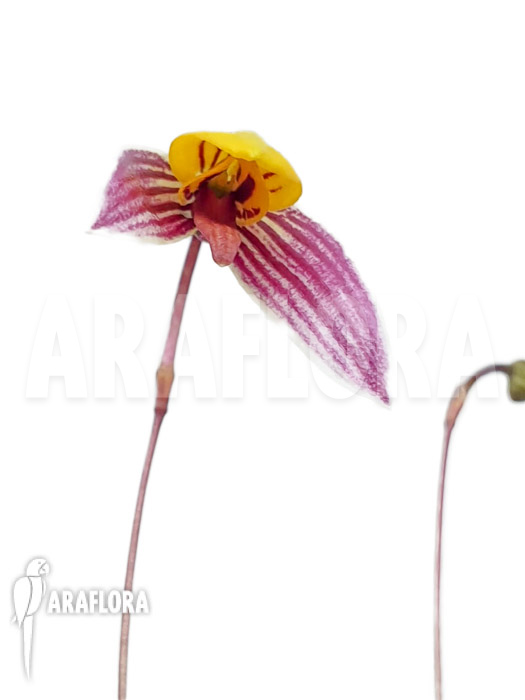Bulbophyllum bolsteri 'S' - Orchid614a
Bulbophyllum bolsteri 'S' - Orchid614a
Bulbophyllum bolsteri is a small, warm to intermediate growing orchid from the Philippines. This rambling plant could produce a slender inflorescence with a solitary spectacular flower. Keep this species in a humid terrarium or in warm greenhouses.
Currently not in stock
€ 28,00
Keep me up to date?
Araflora will inform you as soon as the product is available again. Please fill in your e-mail address and we will let you know as soon as the product is back in stock. You will get an e-mail message when the product is available again. Unfortunately we cannot say how long this will be or what the price is likely to be.

Receive an e-mail when new stock of this plant arrives.
Share this plant? Press on one of the following icons.
Bulbophyllum bolsteri is an epiphytical miniature orchid that only grows on some islands of the Philippines. It has a sympodial growth form. The pseudobulbs of this orchid are oval to egg-shaped and are around one centimeter when mature. There is some distance between each pseudobulb, hence the rambling nature of this plant. From every pseudobulb, a solitary, deep green, leathery, lanceolate leave is formed. This species could flower year-round, with the most chance in summer and the begin of autumn. The orchid produces an inflorescence of around 12 cm long, carrying a spectacular flower. The lower sepals are light-colored, with contrasting vertical bright purple striations. The rest of the flower is intense yellow with some dark purple patterns that could vary a bit per plant. This species is best to propagate by division. Make sure that every division has at least four healthy and mature pseudobulbs.



Bulbophyllum bolsteri naturally occurs on mossy branches of tropical trees in lowland forests. This species grows best under warm to intermediate conditions; it is best to keep it under temperatures above 15 degrees Celsius. In the evening or at night the temperature could drop 5 degrees or so, based on the day temperature. Make sure to keep humidity high as possible, at least 75% at all times and allow for excellent ventilation. Grow this species in bright indirect light. Direct sunlight in the morning or evening could increase the chance of flowering. Use a very airy substrate mixture for epiphytes, consisting for the main part of bark chips. Under lower humidity, the use of sphagnum moss is recommended. When humidity is very high, this species favors growing mounted on bark or pieces of tree fern. Make sure this plant never dries out completely; water when the roots approach to dry out. Fertilize this plant with specialized orchid fertilizer on a weekly basis, 1/4 to 1/2 the recommended strength.










 7 cm
7 cm
 4 cm
4 cm












